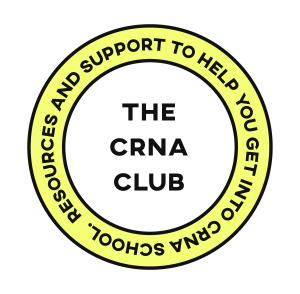When it comes to the difficulty of didactic and clinical experiences, it's a topic that sparks diverse opinions among SRNA students. The perspectives vary, whether you're a first-year or a third-year student, or if you're in a front-loaded or integrated program. With such a rich tapestry of responses, I firmly believe that the best approach is to tailor your SRNA journey to your unique circumstances. In this blog post, I'll share my personal take on the matter.
Emory's Integrated CRNA Program Experience
As an SRNA at Emory University’s integrated track, we cover didactics for about eight months and then begin clinical rotations while continuing didactic coursework. Throughout the program, the didactic load remains static, while the clinical time grows exponentially from two days a week to four days a week by the middle of the second year. From then on, the didactic and clinical load will remain the same until graduation.
Didactic Coursework: Structured Yet Challenging
Didactic coursework followed a formula. I knew what to expect from the professors, which textbooks would be used, and how they would test. I would pre-read, review the PowerPoint deck, take notes in class, and study them until test day. It was predictable, but it also required a delicate balance between study and self-care. From my experience, I found that didactic coursework became more challenging when I neglected the right balance between study time and self-care. Overstudying and cutting back on self-care took a toll.
Clinical Rotations: Unpredictable But Rewarding
In comparison, clinical rotations did not follow a formula. During my first rotation, I felt prepared to know the steps to direct laryngoscopy, but troubleshooting a real-life person's airway is another story. Every day in clinical, it felt like starting from square one for some time. We all went from an ICU nurse at the top of our field to becoming a novice apprentice again. Throw in a mixed bag of preceptor personalities and different expectations, and you learn to become flexible and accept constructive criticism quickly.
Didactic vs. Clinical: Which Is Harder?
So which one was harder? It's not about choosing one. Didactics is more mentally stimulating and challenging, while clinical can be physically and mentally stimulating and challenging. It comes down to knowing how you learn and study, your flexibility and adaptability, and how you take constructive feedback and apply it.
Having a system in place that guided my didactic was helpful for me. Additionally, I reassessed after every exam if my studying techniques were beneficial or needed to be changed. During clinical, I would always inform my preceptor where I was in my clinical rotation, and we'd discuss expectations for the day and what I needed to work on. Providing one item a day to work on felt more manageable than five or more.
Remember: CRNA School Is a Marathon, Not a Sprint
The critical thing to remember is that our CRNA journey is not a quick 5K race but a marathon full of excitement and varied terrain where, some days, all you see is the next step ahead, and that is totally and completely okay.
Check Out Our CRNA Resources
Looking for tools to support your CRNA school journey? Visit our Shop for affordable resources, including a CRNA School Database, Resume Templates, and On-Demand Mock Interviews. Check them out here.


